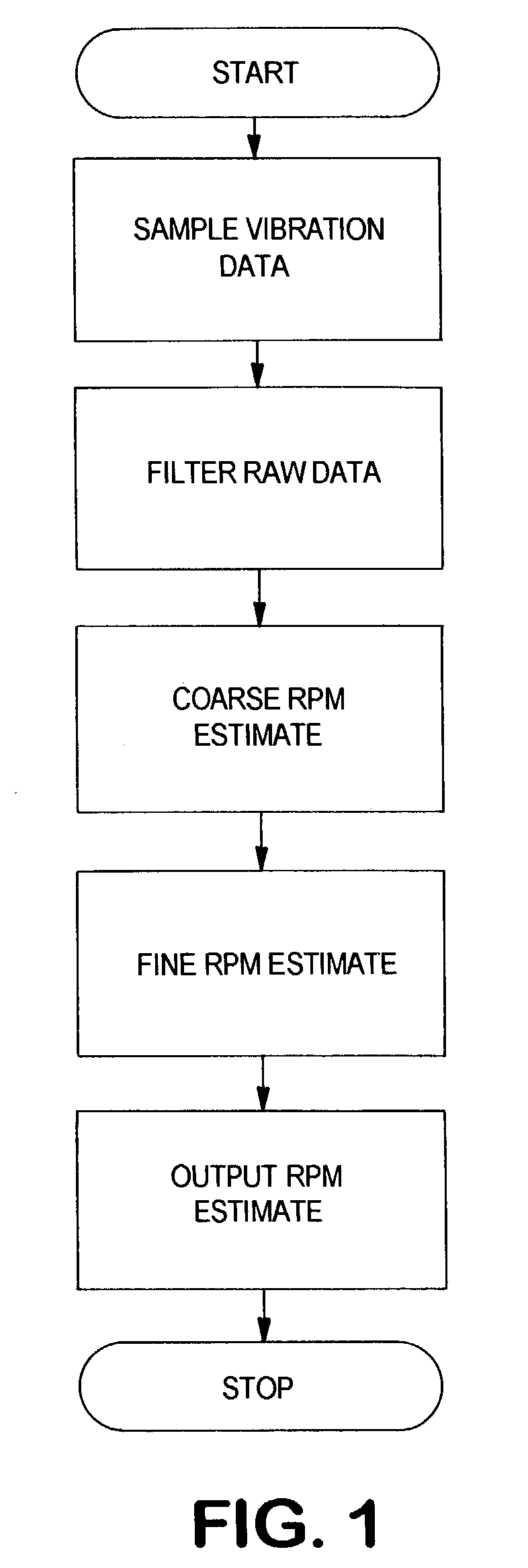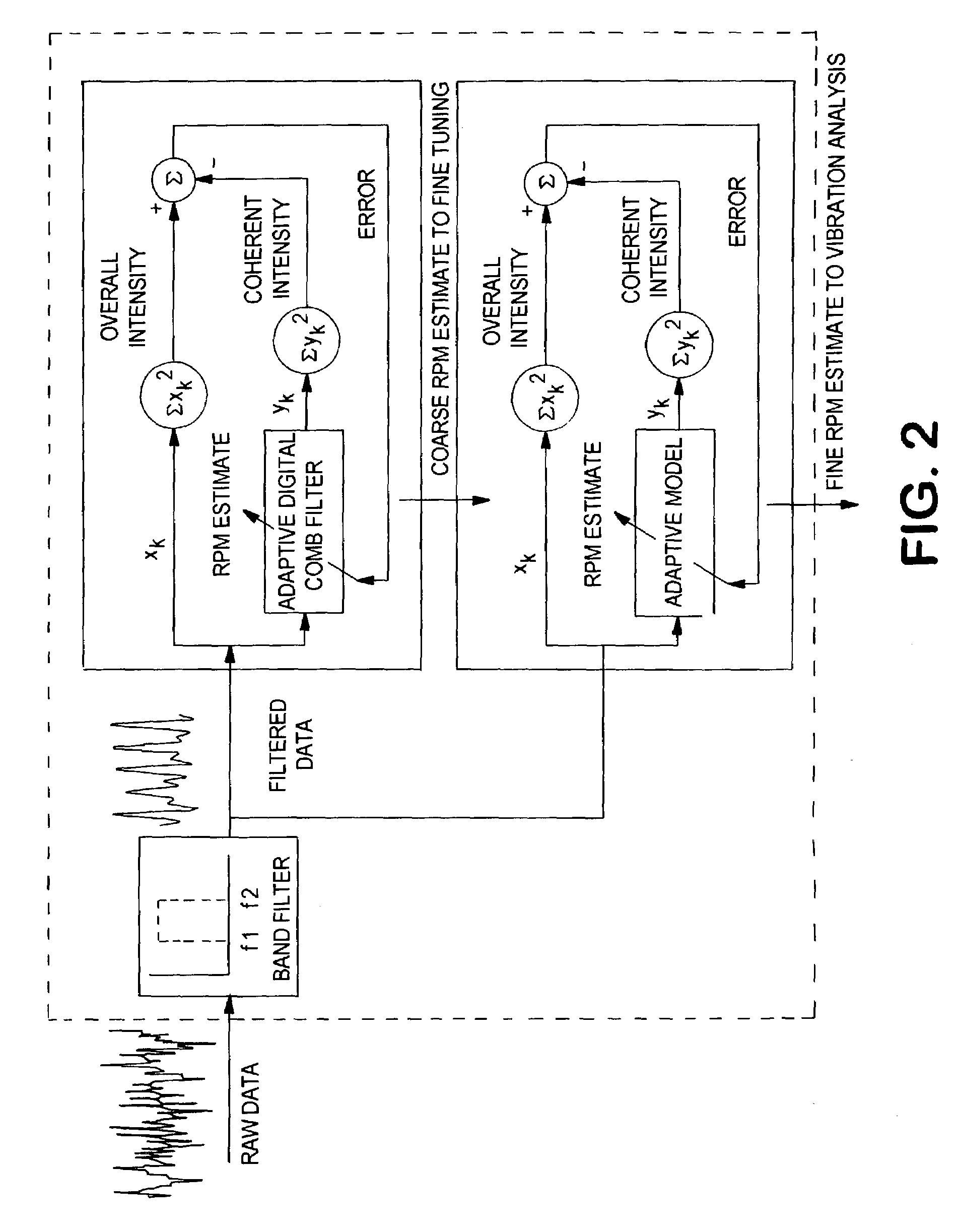Virtual RPM sensor
a virtual and rpm sensor technology, applied in the direction of machines/engines, liquid/fluent solid measurement, instruments, etc., can solve the problems of operational problems, maintenance or repair, and the existence of operational problems, so as to achieve the effect of rapid and inexpensive implementation
- Summary
- Abstract
- Description
- Claims
- Application Information
AI Technical Summary
Benefits of technology
Problems solved by technology
Method used
Image
Examples
application example
[0065]In order to further illustrate the system and the method of the present invention, an real-world application example is now provided wherein raw vibration data was acquired for two motor-driven pumps in order to test system performance. In this case, the design speeds for both pumps were 3600 RPM. Using a speed resolution of + / −1 RPM, the pump speeds were measured by the system of the present invention to be 3538 RPM for Pump 1 and 3579 RPM for Pump 2.
[0066]FIG. 5 illustrates the vibration waveforms and frequency spectrums for both Pump 1 and Pump 2. The pumps have significantly different vibration characteristics in that Pump 1 exhibits a fairly simple spectrum with dominantly low frequency vibration while Pump 2 generates a very complex spectrum with excessive high frequency components and a significant amount of broadband noise. There is also a substantial amount of DC noise in the spectrums due to the integration of the data acquisition system during the testing period.
[00...
PUM
 Login to View More
Login to View More Abstract
Description
Claims
Application Information
 Login to View More
Login to View More - R&D
- Intellectual Property
- Life Sciences
- Materials
- Tech Scout
- Unparalleled Data Quality
- Higher Quality Content
- 60% Fewer Hallucinations
Browse by: Latest US Patents, China's latest patents, Technical Efficacy Thesaurus, Application Domain, Technology Topic, Popular Technical Reports.
© 2025 PatSnap. All rights reserved.Legal|Privacy policy|Modern Slavery Act Transparency Statement|Sitemap|About US| Contact US: help@patsnap.com



